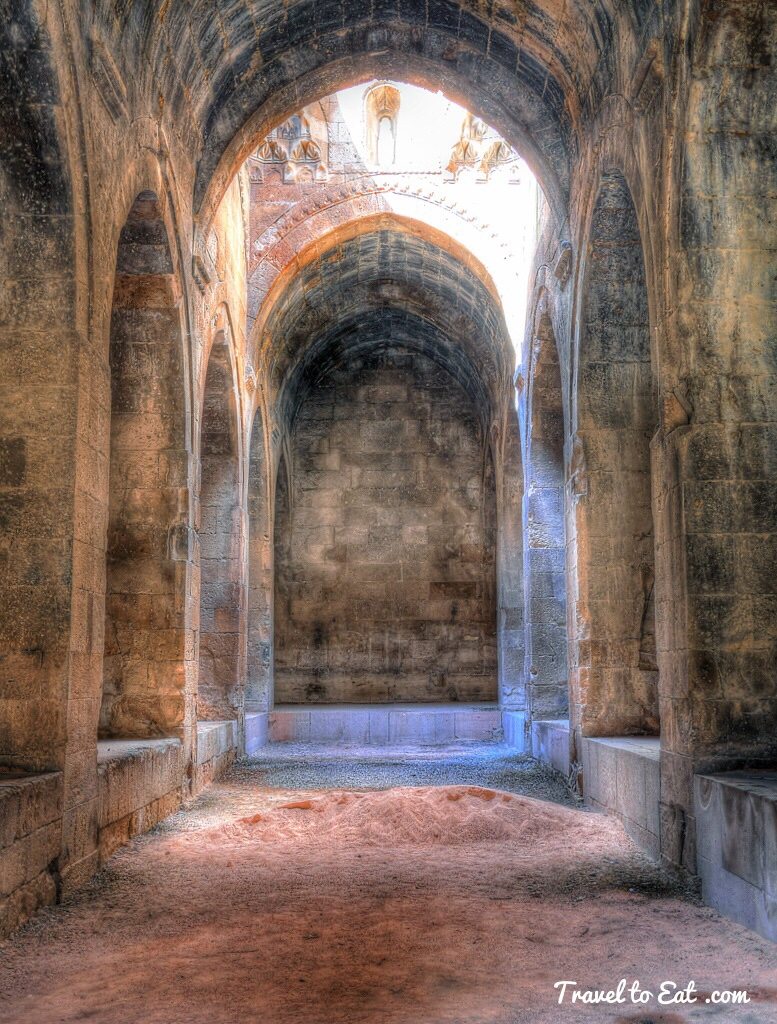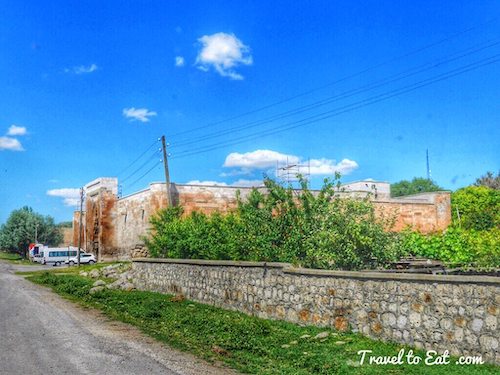
Caravanserais have been used since the 10th century. Trade across Turkey in medieval Seljuk times was dependent on camel trains (kervan, anglicized as caravan), which stopped by night in inns known as kervansaray or caravanserai, literally “caravan palaces”. These buildings provided accommodation and other amenities for the merchants and stabling for their animals. Caravanseraies were first seen in Central Asia during the times of Caravans, Ghaznavids and the Great Seljuk State. They were building fortresses called “Ribat”. These buildings, first constructed as small buildings for military uses were later developed and changed into larger buildings and were used for both religious purposes and as inns for travelers. This is a typical caravanserai which is situated on the Aksaray Kayseri highway. It has two parts, one open and one covered. The open part was built by Aleattin Keykubat in 1231 and the covered part was built by Giyasedddin Keyusrev in 1239. This is the third largest and one of the last caravanserais built in Anatolia. Stones cut from the volcanic rock were used in the construction of the caravanserais in the region of Cappadocia.
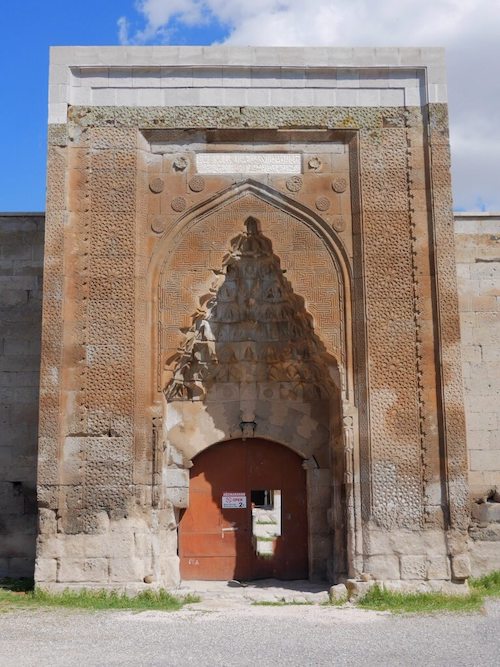
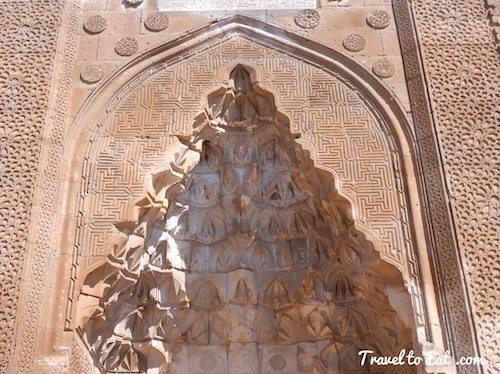
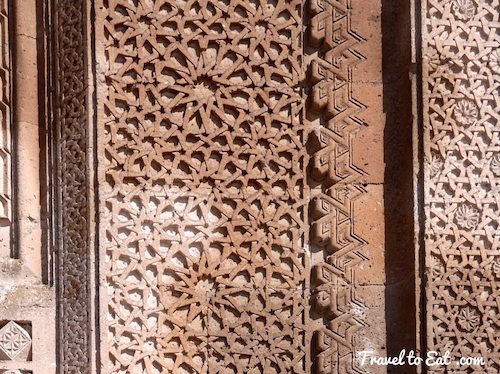
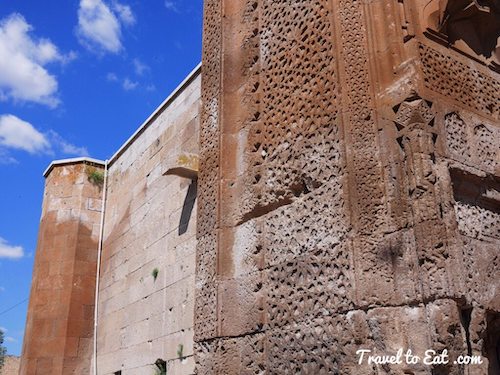

Muslims are fastidious In their avoidance of depictions of animals, plants and/or everyday life. The avoidance of the use of images for religious reasons is called aniconism. In Islam, šhirk is the major sin of idolatry or polytheism. Islam strongly prohibits all form of idolatry. It refers to the deification of anyone or anything other than the singular God. As in the other Abrahamic religions, in practice the term has been greatly extended and may be used very widely within Islam to describe behavior that is deprecated, including the use of images in a way that is seen as un-Islamic, but does not literally constitute worship. For instance in Mecca, virtually all medieval buildings and mosques have been destroyed to avoid unwanted attention from the time of the Prophet by the faithful. As a result, the decorations on buildings in general and mosques in particular are geometric in form. The decorations on the entryway of this caravanserai are both beautiful and incredibly detailed. The sculptors must have been quite talented, especially in the 13th century.
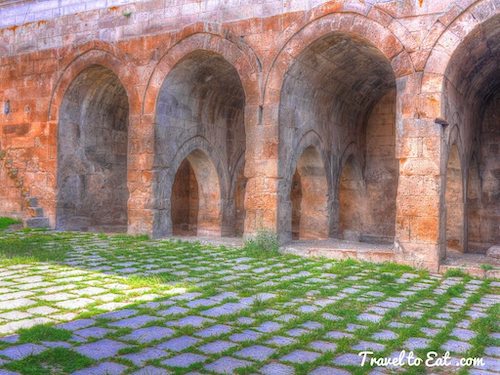

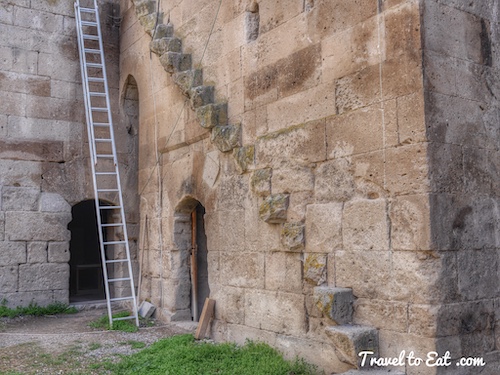
As you enter the caravanserai, you find yourself in a large courtyard. It is perhaps appropriate that a ladder is set next to the ancient stairs to the rooftop. The middle of the staircase seems to be broken, but even in pristine condition I would be hesitant to go up the staircase.

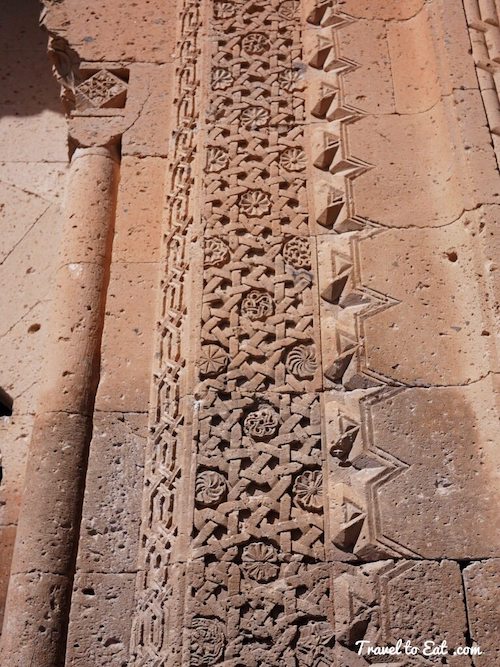
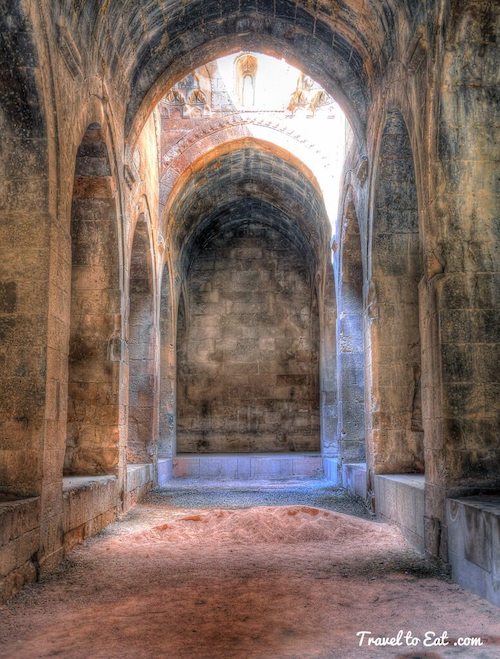
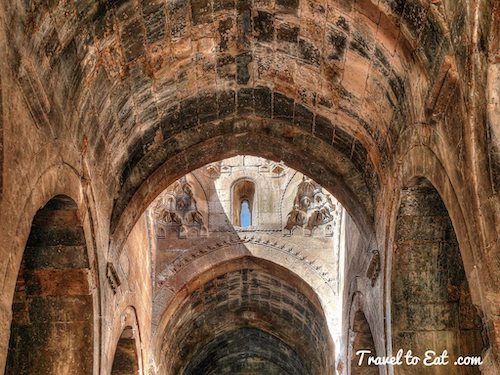
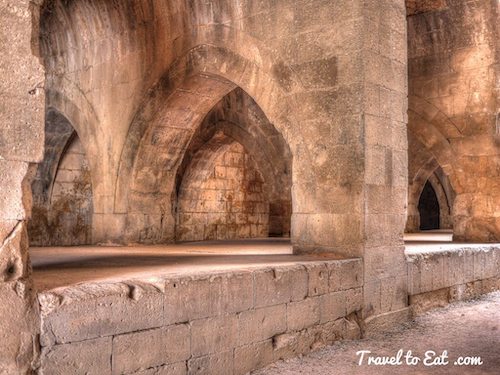
I think the elevated platforms in this area were meant for sleeping quarters for the travelers. However, it seems that the odors from past times still linger. Probably not the ideal location for a good nights sleep, but better than being in the outdoors, susceptible to thieves. The back of the courtyard is a covered building, probably reserved for the staff, eating and drinking and lodgings for distinguished visitors. In addition the covered areas would have been used in winter.
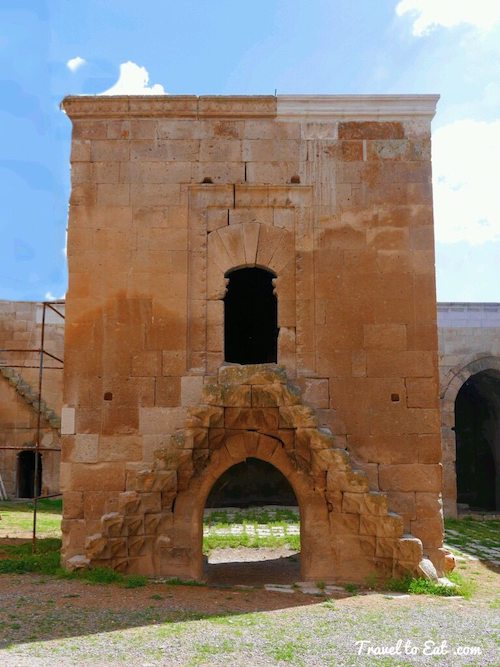
In the center of the courtyard was a simple mosque (Kiosk Mescit), elevated off the ground with the same unbelievable stairs. The “Kiosk Mescid”, usually located in the center of the courtyard, was the most important part of the caravanserais. These mosques were normally built on an arched base.
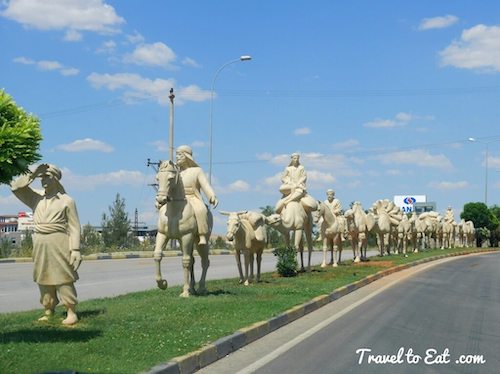
Especially during the times of Seljuk Sultans Kilicarslan II (1156-1192) and Alaaddin Keykubat I (1188-1237), the construction of these buildings increased after the security of the trading roads was provided by the state. The loss of the trades would be met by the states, which is accepted to be the first insurance system. During that period, both domestic and foreign trades prospered. In this way, the Seljuks, who were already economically powerful, became politically strong as well. In caravanserais, foreign as well as native traders, would be put up for three days. Their shoes would be repaired or the poor would be given new shoes. The ill would be treated and animals would be tended and if needed, horses would be shoed. The courtyards were normally surrounded with bedrooms, depots, bath houses and bathrooms. “Mangals” (braziers) or “tandirs” (oven in the ground) were used to heat the places whereas candles and lamps were used for light. All services were provided by the people working in caravanserais; e.g., doctor, imam (prayer leader), depot officer, veterinarian, messenger, blacksmith, and cook. Like the towns and villages through which the trade roads passed, the vicinity of the caravanserai once turned into small commercial centers. When Europeans found new ways to China, the Silk Road started to lose importance and of course the caravanserais as well. After the 16th to 17th centuries, most of the caravanserais were never used again.
[mappress mapid=”59″]
References:
World Visit Guide: http://worldvisitguide.com/salle/MS05548.html
Goreme: http://www.goreme.com/caravanserais.php
Silk Road: http://www.cekulvakfi.org.tr/files/dosyalar-haber/ipekyolu_harita.pdf

